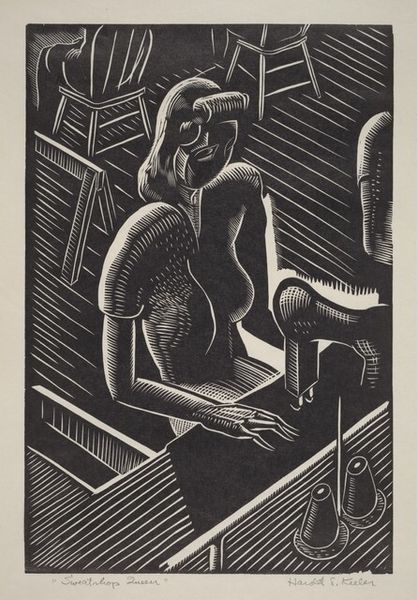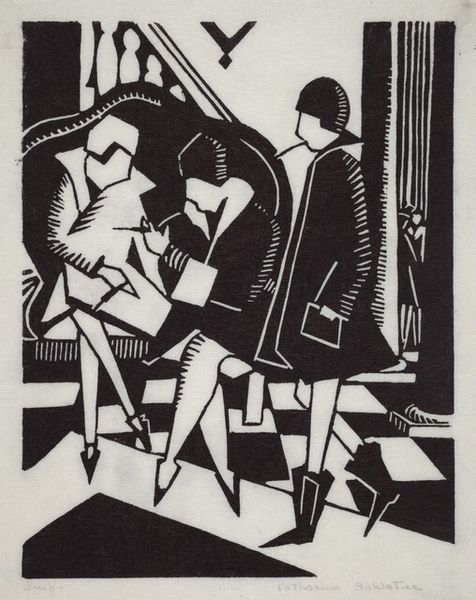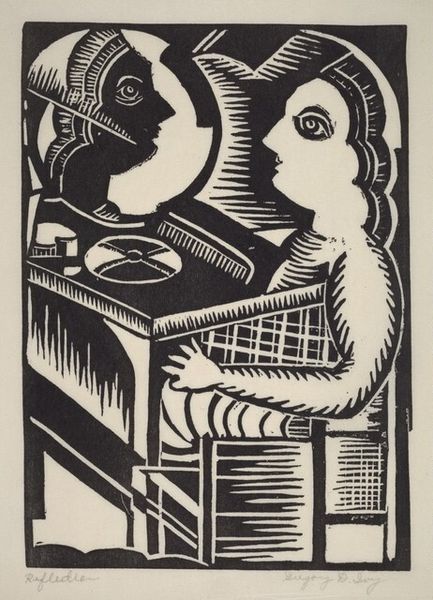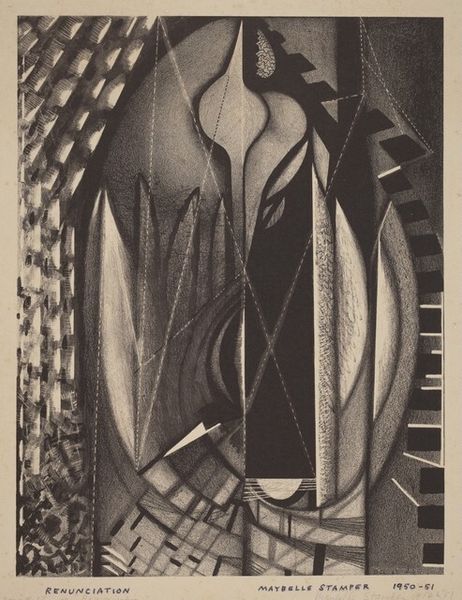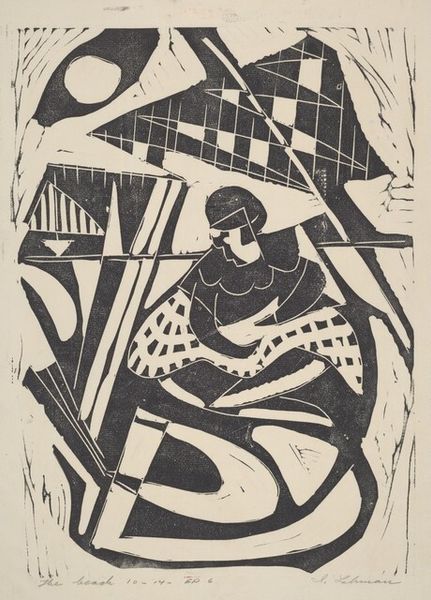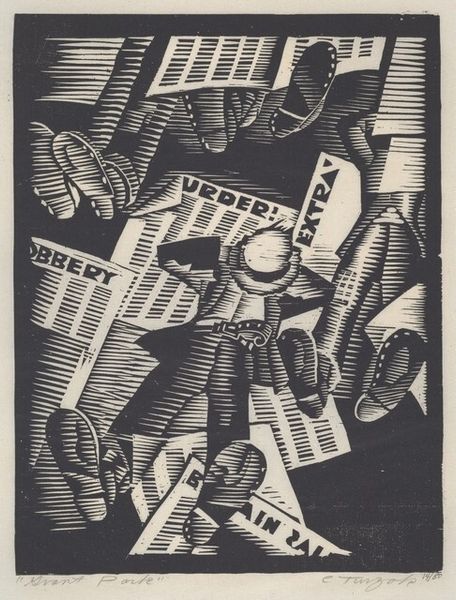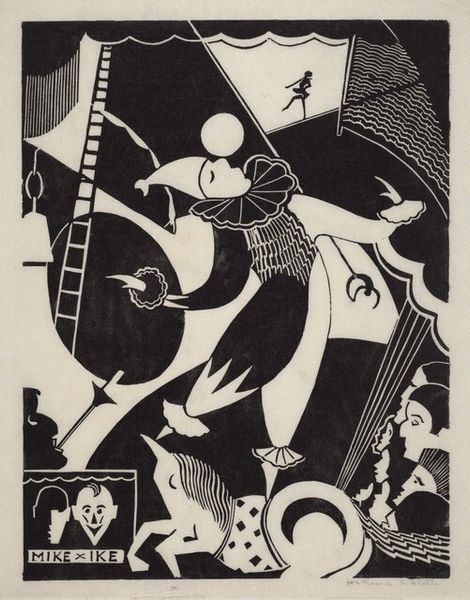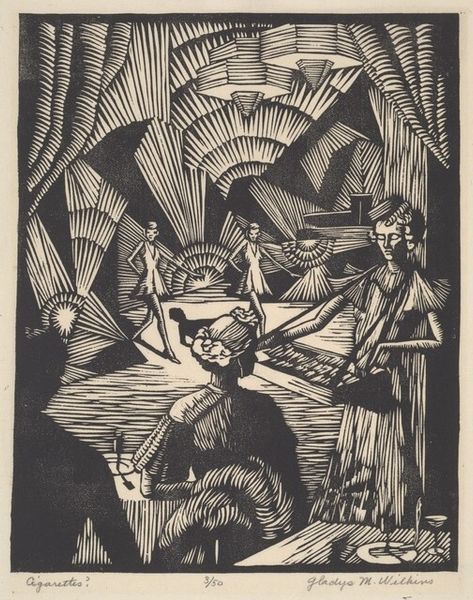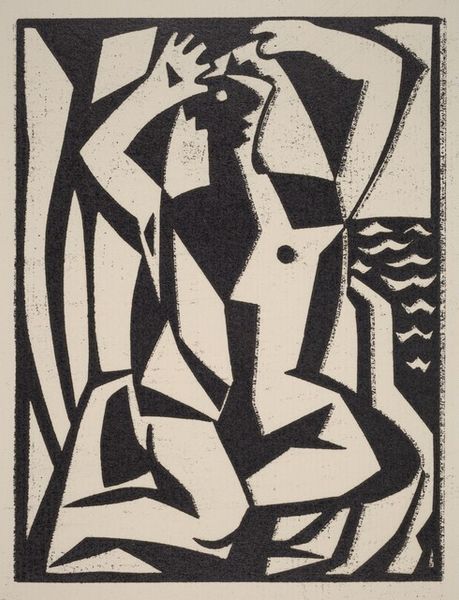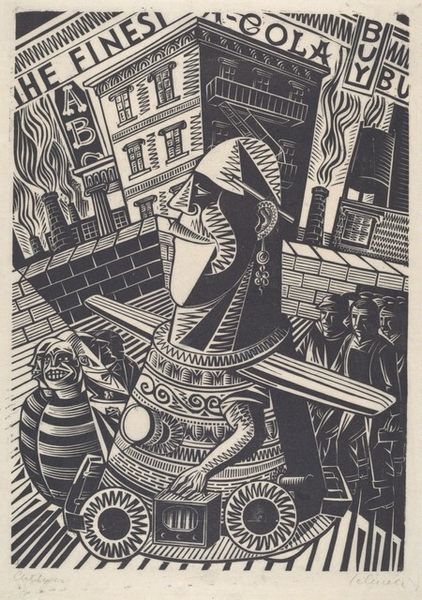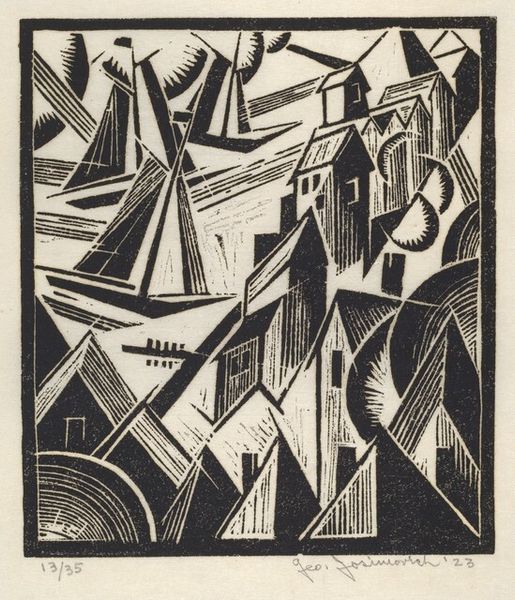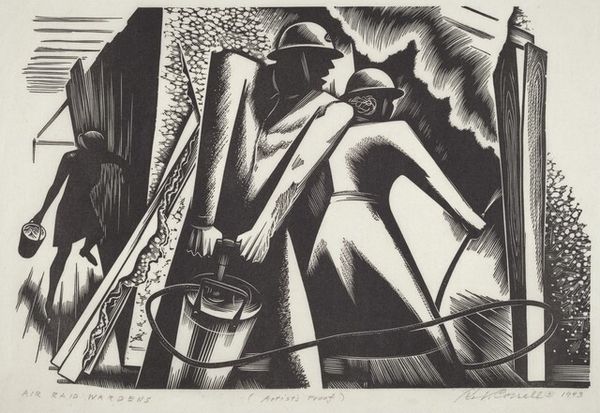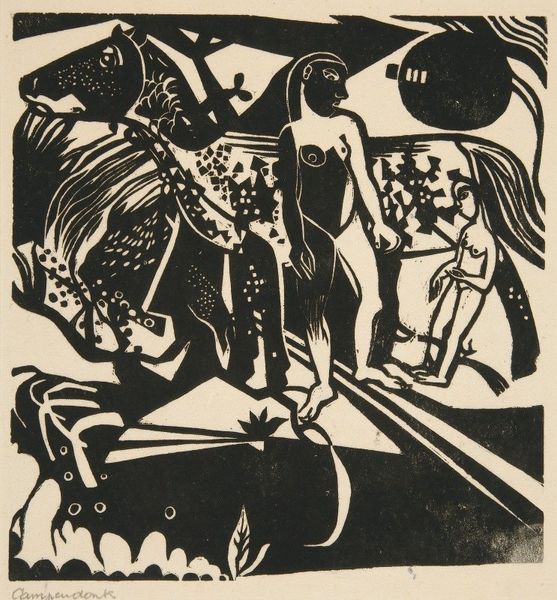
drawing, print, woodcut
#
portrait
#
drawing
# print
#
caricature
#
caricature
#
figuration
#
geometric
#
woodcut
#
line
#
mexican-muralism
#
genre-painting
#
realism
Dimensions: Image: 175 x 114 mm Sheet: 321 x 250 mm
Copyright: National Gallery of Art: CC0 1.0
Editor: This striking woodcut, "Untitled (Tortilla Sellers, Taxco)" by Olin Dows, from 1933, depicts a group of women selling tortillas. The geometric shapes and the high contrast create a somewhat somber atmosphere. How do you interpret this work, especially considering its historical context? Curator: This print offers a fascinating glimpse into the socio-economic landscape of 1930s Mexico. Dows, affiliated with the Treasury Relief Art Project, aimed to document American life, and that expanded into other parts of the Americas. Here, he focuses on everyday life in Taxco, highlighting the labor of these women. Given the era, marked by the Great Depression and ongoing social reforms in Mexico post-revolution, it’s interesting how he frames these vendors. What do you make of their anonymity? Editor: Well, the facelessness, almost a uniformity, makes me think of the working class as a whole, not just individual women. Is he perhaps commenting on their socio-economic status within a larger system? Curator: Exactly. Their anonymity invites us to consider the systemic forces impacting their lives. The choice of woodcut, a medium often associated with popular and politically charged imagery, reinforces this. The high contrast amplifies the stark reality of their labor. Do you see any echoes of Mexican muralism, a movement prominent at the time? Editor: Now that you mention it, the emphasis on everyday life and social realism feels aligned with the themes explored by muralists like Diego Rivera and José Clemente Orozco. Although, this is far more intimate in scale. Curator: Precisely. Dows is participating in the broader cultural conversation, but through a different lens. The TRAP project also reflects a particular US perspective on its southern neighbor, and we must bear in mind the power dynamics involved. Editor: That gives me a lot to consider; how the social, political, and even institutional contexts all play a part in how we understand the work and what it says about that period. Curator: Indeed. It reminds us that art is rarely created in a vacuum.
Comments
No comments
Be the first to comment and join the conversation on the ultimate creative platform.
